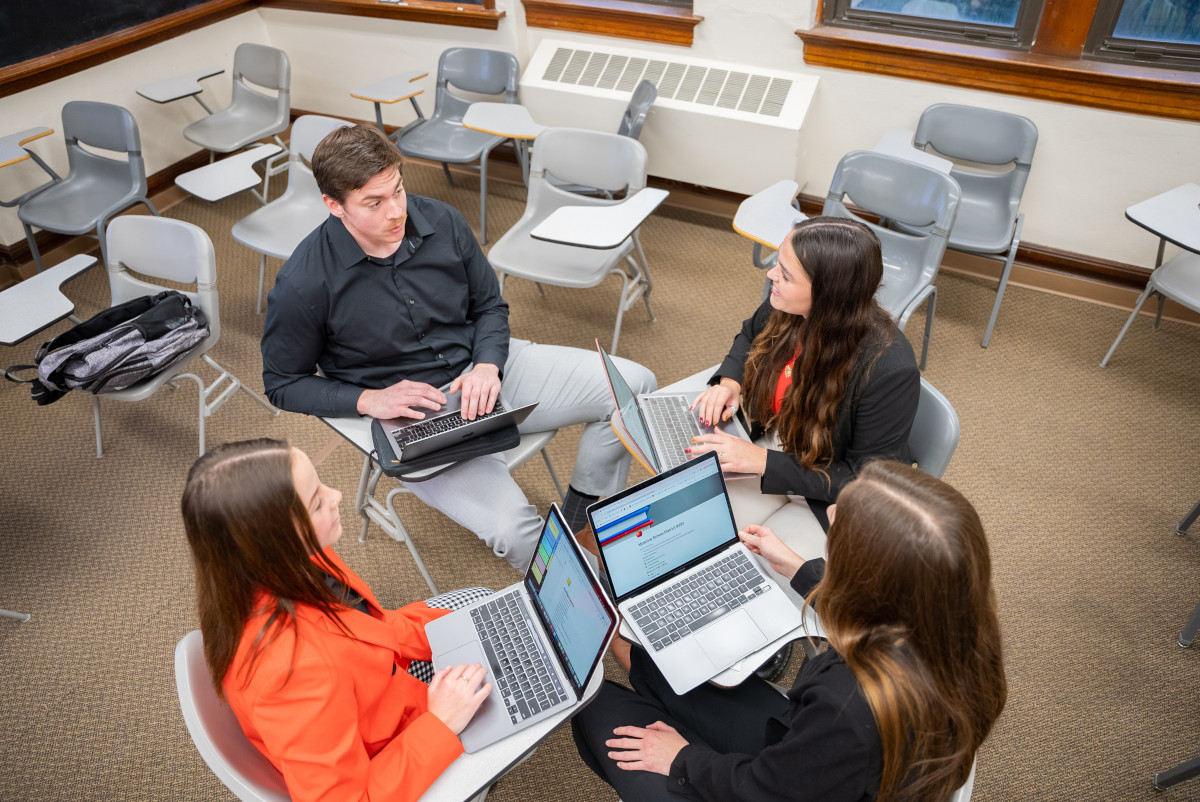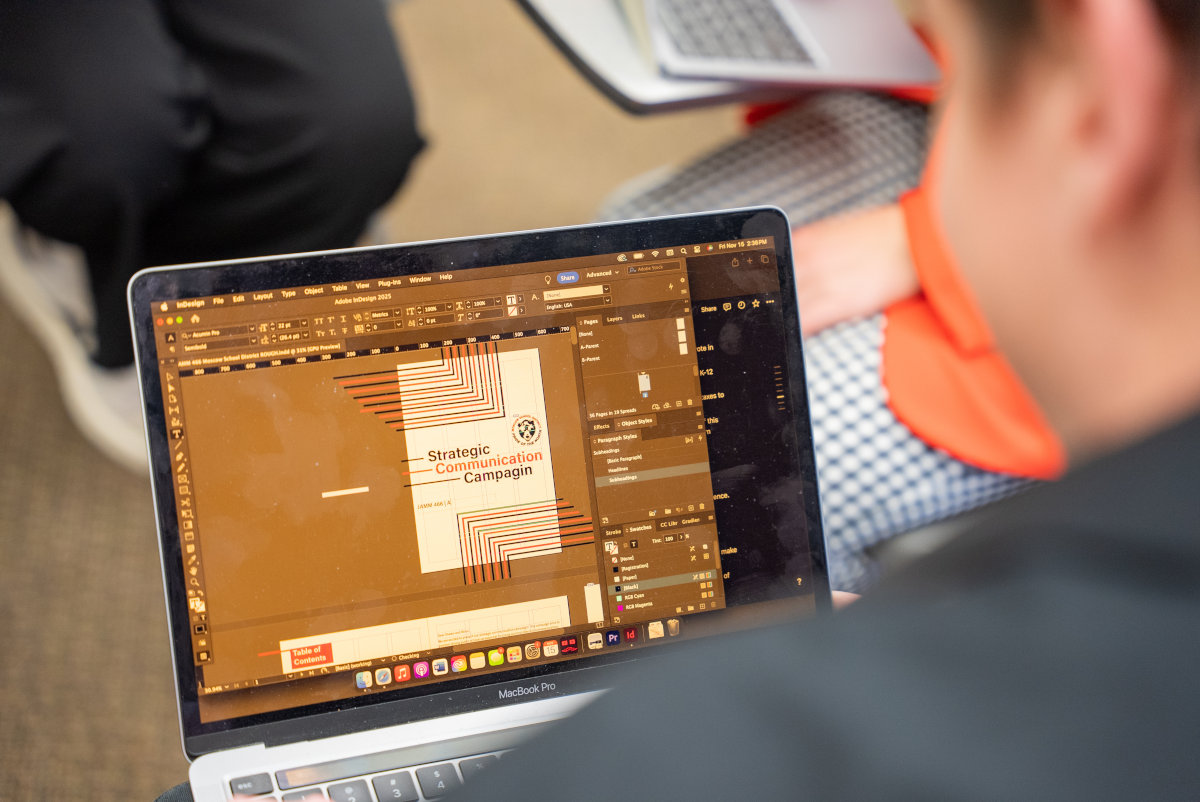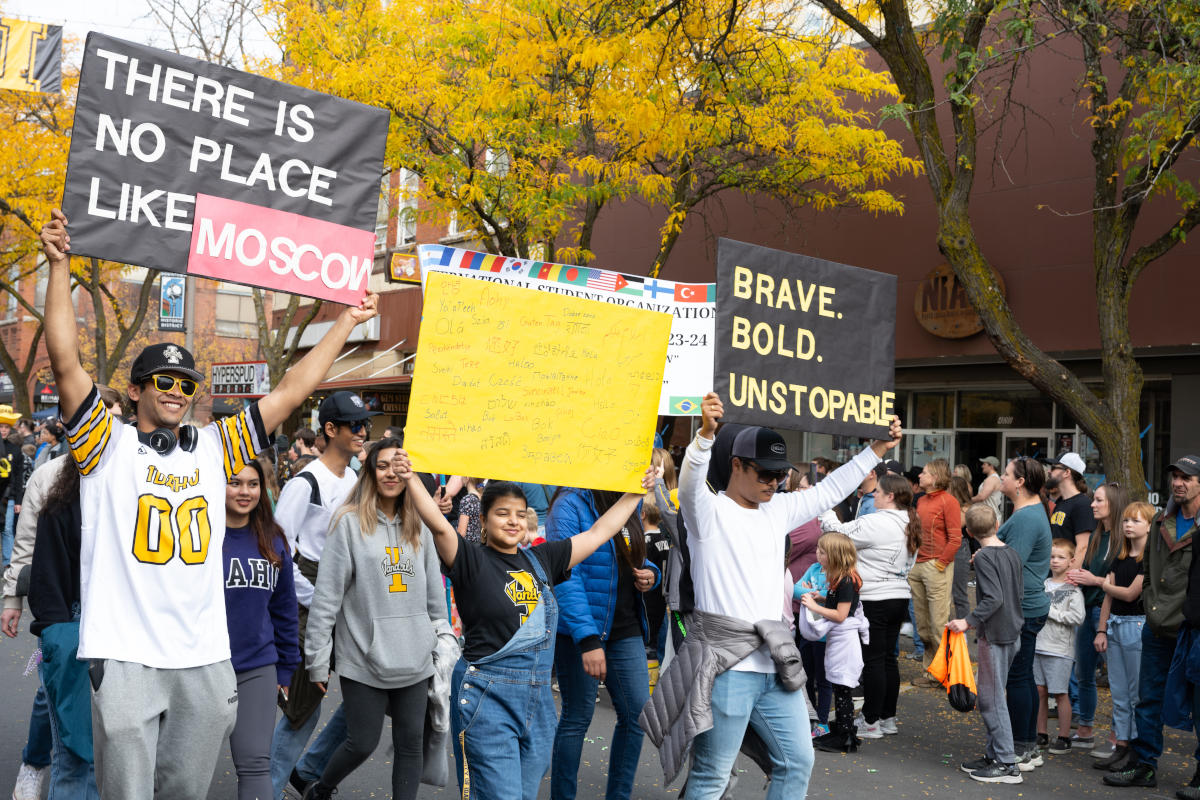Public relations and advertising students create communications plan for Moscow School District
Campaign will strengthen ties between district and city
Shawn Tiegs ’12, ’18, was hired as superintendent for Moscow School District #281 (MSD) in 2023. Although he describes the opportunity as a “dream job,” it didn’t take long for him to wake up to some of the harsh realities he now faces.
Inheriting a district full of aging facilities and living in an environment where school choice could potentially reduce the number of students attending public schools, he found himself in the same dilemma as other public school district leaders – needing to learn how to sell themselves as the best choice for teaching area children.
“We live in a world where parents now have a lot of choices about where and how their children will be taught,” Tiegs said. “I think having more choices is ultimately good, but what it means for us is we have to get the message out and show all of the positives about how we are educating our kids.”
To help him formulate that message, Tiegs and the Moscow School District teamed up with four College of Letters, Arts and Social Sciences seniors to create a strategic communication campaign, which will help the school district communicate more effectively with the public while reminding them about the reasons public school in Moscow is a good option.
“A strong public school system is symbolic of a healthy community and what that community stands for,” said Caitlin Cieslik-Miskimen, assistant professor of journalism and mass media and coordinator of the Fall 2024 senior capstone project. “This was a fantastic opportunity for the students to work with school officials to create a communications plan to help make sure MSD continues to thrive.”

Data mining
The project wasn’t just meaningful for the “Vandal Vision Agency” – advertising students Kevin Eldredge and Lillie Esson and public relations students Sophia Robertson and Brielle Sorensen – it was also a labor of love.
“We all attended public school in Idaho and understand how important that has been for our academic journey,” said Esson, originally from Filer.
To obtain data for their study, the group created an online survey that went to parents of children currently enrolled in Moscow public schools.
The survey was comprehensive, asking respondents not only for information about age, education level and how long they have lived in the area, but also about preferred methods for receiving news, voting tendencies and how involved they are in the community.
Once results of the almost 300 responses were compiled, the group created profiles for the two sets of Moscow voters they felt were most important to the school district – 35 to 55-year-old, college-educated females and 18 to 24-year-old males who are likely attending U of I.
We all attended public school in Idaho and understand how important that has been for our academic journey.
— Lillie Esson, senior in advertising
“Both of these groups are likely to participate in elections and are motivated to support public education,” said Boise native Robertson. “The 35 to 55 year olds likely have children already enrolled in the public school system, and the 18 to 24 year olds are politically motivated, are attending a public university and want to support their community.”
The data also showed that while communications from the school district through email and Facebook is preferred, both groups of interest have a strong inclination toward receiving news from local sources and from word of mouth within the community.

Blueprint for success
The students presented their findings to an MSD committee in December, focusing on three main strategies – increasing the positive sentiment of public schools and teachers, increasing awareness about elections and highlighting the state of current MSD facilities.
The group also discussed creating contests or other voter-engagement activities and tying them into community events to keep the topic of public schools relevant.
One specific idea was for MSD to create a yard sign design competition where K-12 students would make signs highlighting the phrase “Stronger Schools, Stronger Communities.” People would be able to vote for their favorite designs through social media and it could take place in conjunction with Artwalk, an art show held in downtown Moscow.
“One thing almost everyone in the survey agreed on was support for teachers,” said Sorensen, who came to U of I from Gooding. “We think an event like this would create excitement and support within the community because of that already strong bond with teachers.”

When bringing up the state of MSD facilities, the group suggested that if the district wanted to put out messaging specific to a school bond levy, they should provide detailed information about what the funds would be used for and how it would affect voters.
“In the Lewiston School District, when their levy passed for the new high school, they were very specific about how passing the bond would affect homeowner taxes,” said Eldredge, originally from Meridian. “People know about the conditions of schools in Moscow, but we think being transparent about how a bond would affect voters financially is equally important.”
Tiegs and the school board representatives will now discuss which pieces of the plan to use and when to use them. Audience members at the presentation were impressed with the level of research and the detail of the recommendations made by the students.
“The purpose of this was to get some ideas about how to partner with community members and organizations to help get our message out while trying to maintain our focus on the kids – which is where it needs to be,” Tiegs said. “The ideas these students came up with for us are fantastic. They’re actionable, they’re meaningful and they will help people strengthen their connection to our school district.”
Caitlin Cieslik-Miskimen
Assistant Professor
Article by David Jackson, University Communications and Marketing.
Photos by Garrett Britton, University of Idaho Visual Productions.
Published in January 2025.










